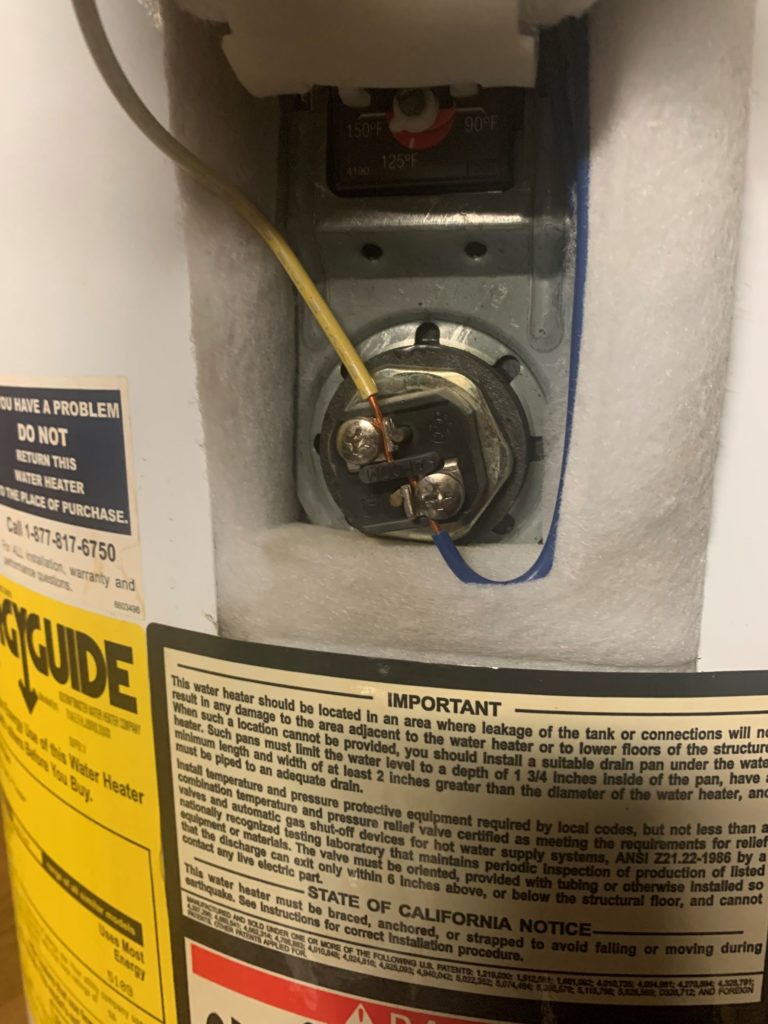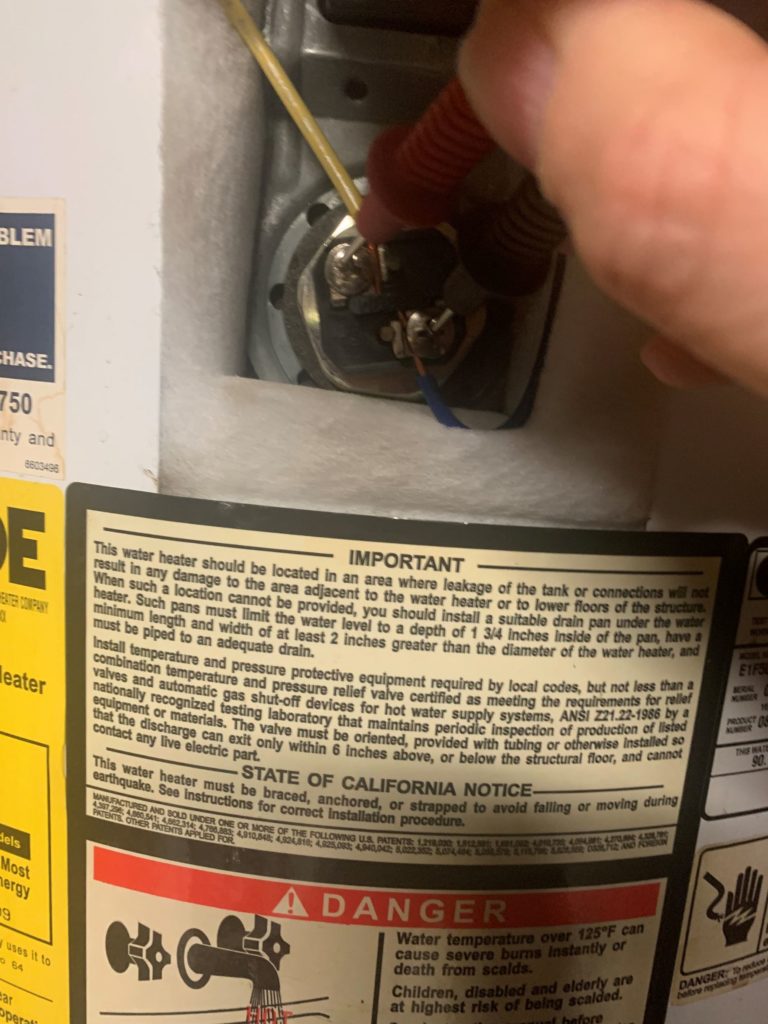Recently, I noticed a problem. It seemed like the first five minutes of the shower was hot and then it went lukewarm. I didn’t think that I was imagining things so I started to ask some questions. Did my wife take a shower before me? Are the kids here? And the answer was no. Hmm, seems like we might have a problem with the hot water heater.
I looked at the date on the water heater, it was dated 1994. So, that is 29 years old folks. The common stated lifecycle is 10-15 years. That means that when we bought the house, we were at the end of the expected duration. But, that is crazy, as long as the tank is not leaking (meaning rusted throughout), then there should be some serviceable parts and some way to check it.
Electric water heaters have two elements at top and a bottom. I surmised that there was a problem with the bottom element because there was some hot water. A quick aside on how water heaters work. Because of the temperature gradient, hot water is on top and cooler water is on the bottom. As you draw from the tank, hot water comes off the top while cooler water is added to the bottom. This actually pushes the hot water out. Time to test things out.


First, take the covers off of the tank. This exposes the elements and thermostats (one per element). Then, with a multi-meter set to resistance (that is the ohm’s symbol omega, sorry I cant add special characters) put the lead on each wire terminal and measure. The expected result depends on your particular element but I was expecting around12 and 13 ohms. From the picture, you can see that the top element measured 13.4 and the bottom measured 0.7 ohms.



If you remember you basic physics and circuits, 1 ohm is a broken circuit. What is likely happened that the element is all gunked up with mineral build-up. But, the element could be burned out and the circuit is completed with the mineral build up, at least that is my speculation.
Had I gotten two good resistance measurements of the top and bottom elements, I might have turned my attention to the thermostat. In theory, those could be tested too, but it is more complicated and I didn’t do it so I am not going to talk any further about it. I am going to attempt to replace the elements.
I say attempt because I hope that I can get the bottom element out. There is a lot of corrosion around the element and who knows what the inside is looking like. I will probably look at the top element and will make a decision as I get there. The replacement I ordered comes with two elements and is billed as a ‘tune-up’.
End Your Programming Routine: If you are interested, stay tuned to follow up on this project. What I am trying to get across today is that things like this are not out of reach of the average homeowner. A little knowledge of how a hot water heater works and what is possible can lead to saving a lot of money. I don’t know this for a fact, but my guess is that a plumber would replace the whole thing because after all, it is three times older than it’s expected life.
Recent Comments